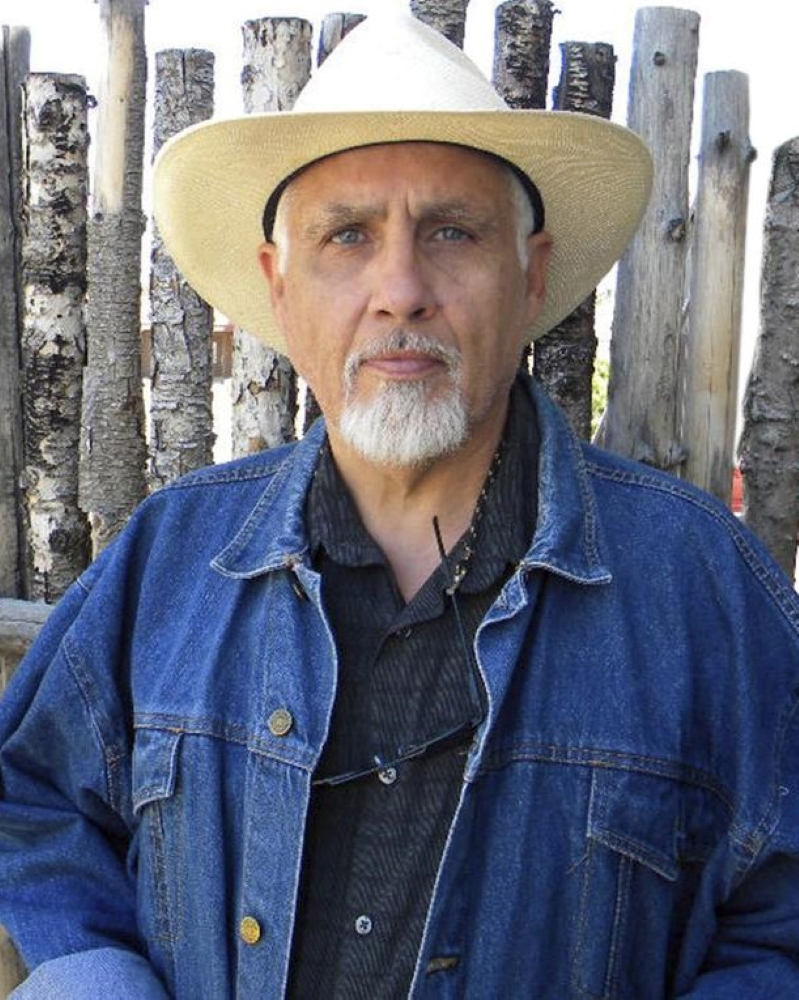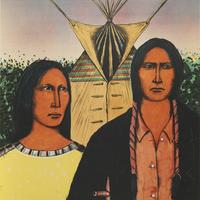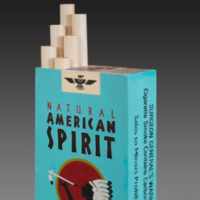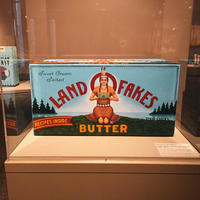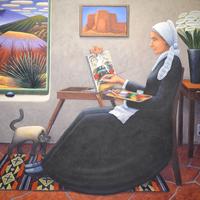More about David Bradley

Sr. Contributor
David Bradley is known for being an outspoken advocate for Native American artists, and a lot of his work reflects his views.
Sometimes he expresses his opinions by being in-your-face political, and at other times he is much more subtle; he also incorporates humor in many of his works. His work includes paintings, sculpture, and mixed media; he has also “dabbled” in photography, printmaking, and even jewelry.
Bradley was born in Eureka, California in 1954, but lived there only briefly before his family moved back to Minnesota, where he spent most of his youth in Minneapolis and on the White Earth Ojibwa Reservation in Chippewa. Bradley is a member of the Chippewa Tribe in Minnesota, as his mother is Chippewa, while his father is Anglo. At some point during childhood he was placed into the foster care system, and was eventually adopted by a non-Native family. While growing up in Minnesota, he experienced racism directed against Native Americans, which would have a profound effect on his life and, later on, his art.
Bradley studied at the University of St. Thomas in Minnesota for two years before deciding to spend some time with the Peace Corps, where he lived with Mayan people in Guatemala for almost two years. This may have affected his decision to move to the Southwest when he was finished with the Peace Corps gig. He then returned to school, enrolling at the Institute of American Indian Arts in Santa Fe, New Mexico, where he earned an AFA in sculpture, then a BFA at the College of Santa Fe. He became active in the Santa Fe art scene, beginning with a stint at a local gallery. The local Native art market would soon be an eye-opener for him.
As Bradley transitioned to making a living as a working artist, he became more and more aware of the exploitation of Native artists, as well as non-Natives pretending to be Native in order to grab a share of the lucrative market for Native American art, especially in the heart of that economy: Santa Fe. Counterfeit Native art was (and still is) a big problem, and to counter this, he helped to found the Native American Artists Association. This organization was involved in getting the Indian Arts and Crafts Act passed; this federal law made it illegal to falsely label and sell art as made by Indians when it was not.
His activism on the behalf of Native artists made him some enemies in the Native arts business community; Bradley relates that a group of dealers, curators, and artists conducted a campaign against the Indian art law, as well as Bradley personally, which led to him being “blacklisted” for a number of years. He was inspired to paint Land O’ Fakes (Museum Currency) in 2007 due to this campaign.
Some of Bradley’s paintings have quite the cast of characters, including some regulars such as himself, his wife and son, the Lone Ranger and Tonto, Sister Mulvina (a reminder of his Catholic education), Zozobra (an effigy figure burned at the annual Fiestas de Santa Fe), and Coyote. Coyote is a “trickster” in Native-American story-telling, particularly in the Southwest; Bradley will often put a coyote in his paintings, sometimes as the trickster, but also as a symbol of “Santa Fe Kitsch,” which Bradley considers the “ultimate stamp of schlock.” He has, at times, painted art collectors, gallery owners, and other artists, from Salvador Dali, Georgia O’Keeffe, and Vincent van Gogh, to Native artists such as Jaune Quick-to-See Smith, and R.C. Gorman.
Bradley also likes to take cues, often directly, from classic, well-known paintings and incorporate them into his own versions in order to tell a narrative, or to make a statement from the Native point of view. He has riffed on The Last Supper (his version has Indians at the table), the Mona Lisa (in Pow Wow Princess, Southwest), done a series based on American Gothic by Grant Wood (American Indian Gothic), and another based on The Sleeping Gypsy (To Sleep, Perchance to Dream) by Henri Rousseau.
In 2011, Bradley was diagnosed with ALS (Lou Gehrig’s Disease); he continues to paint and sculpt as his health allows.
Sources
- Abatemarco, Michael. “‘Indian Country’ Opens at the Museum of Indian Arts & Culture.” Santa Fe New Mexican, February 19, 2015. https://www.santafenewmexican.com/pasatiempo/art/museum_shows/indian-co…
- “David Bradley.” -. https://blueraingallery.com/artists/david-bradley.
- “The Autry Presents Indian Country: The Art of David Bradley.” Autry Museum of the American West, March 1, 2019. https://theautry.org/press/autry-presents-indian-country-art-david-brad….
- Jacobs, Alex. “David Bradley's Ironic and Iconic Paintings Capture Indian Country.” IndianCountryToday.com. Indian Country Today, April 24, 2018. https://indiancountrytoday.com/archive/david-bradley-s-ironic-and-iconi…
- Joseph, Dana. “David Bradley's Indian Country.” Cowboys and Indians Magazine, September 28, 2015. https://www.cowboysindians.com/2015/08/david-bradleys-indian-country/.
- Noyes, Chandra. “David Bradley: Visions of Native American Life That Pop.” Art & Object, April 5, 2019. https://www.artandobject.com/news/david-bradley-visions-native-american….
- Solly, Meilan. “David Bradley Retrospective Captures Lasting Legacy of Contemporary Native Artist.” Smithsonian.com. Smithsonian Institution, April 11, 2019. https://www.smithsonianmag.com/smart-news/how-david-bradley-deconstruct…
- Verzuh, Valerie K., Suzan Shown Harjo, and David Bradley. Indian Country: The Art of David Bradley. Santa Fe: Museum of New Mexico Press, 2015
Featured Content
Here is what Wikipedia says about David Bradley (Native American artist)
David Bradley (born 1954) is a Minnesota Chippewa artist. He is known for his sociopolitical critique of contemporary Native American art, and as an artist-activist battling art fraud among other concerns.
Check out the full Wikipedia article about David Bradley (Native American artist)

